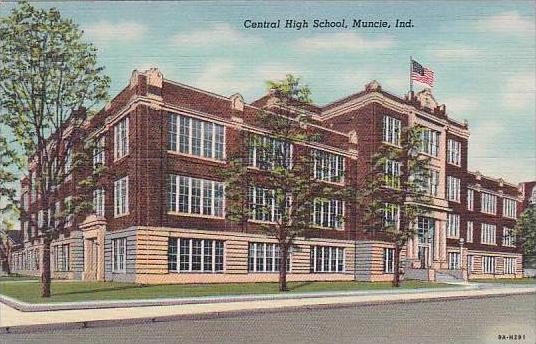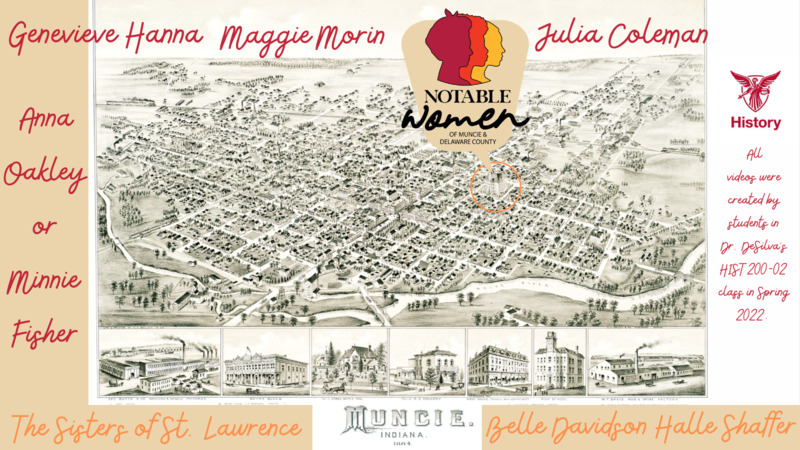Conclusion
After attending St. Lawrence School for nine years, Muncie's Catholic pupils graduated to Central High School. The first high school opened in 1881 and was replaced by the building seen above in 1915. In these halls they mixed with teenagers from all other religious denominations and the city attempted something approximating racial integration. In the 1920s Genevieve Hanna taught History and Latin here. Until the building closed in 1973 it was an important landmark connecting many of the city's residents. Either they or their children or their neighbors' children attended this school.
While few of the women profiled in this project spent time in the building pictured above, from the city's incorporation in 1865, education and employment have been core interests. The city's pride in its early school buildings, high school graduates, and university encouraged all students (and especially women) to seek greater educational opportunities. In the 1880s few people stayed in school beyond elementary education. As the state and federal governments passed laws mandating further cumpulsory education, the number of students and teachers rose. In the early 1890s the city boasted rival business colleges that catered to students seeking more technical business training. These schools reveal the city's earliest interest in higher education, and they laid the foundation for the Eastern Indiana Normal School that became Ball State University in 1918.
The Notable Women of Muncie Project is one product of Muncie's continued pursuit of knowledge and understanding the past. Created by Ball State University History majors, this project shows the varied interests of student-historians and the people that inspire them. The women profiled here lived interesting lives, surrounded by family, partners, coworkers, and neighbors. Narrating their histories helps us think about our community and its vibrant past. See you next semester!


